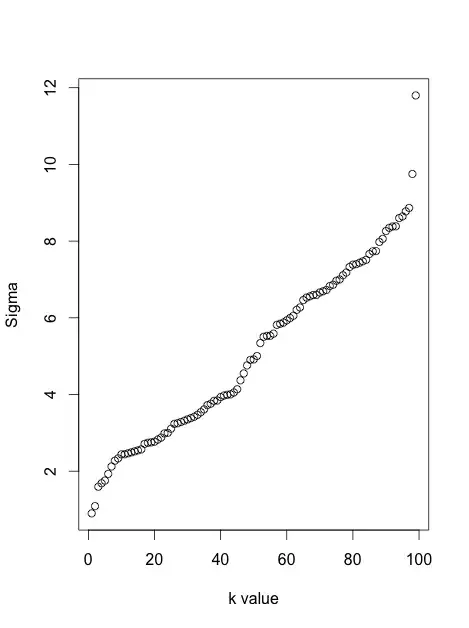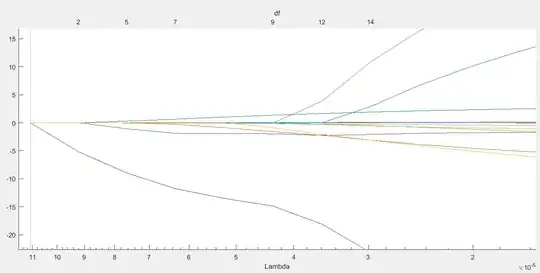Using the example at 3Blue1Brown I constructed a table to help me remember Bayes theorem
where L=Librarian and S =Shy. I understand that $$P(S,L) = P(S|L)P(L) = P(L|S)P(S) = \frac{4}{210}$$ I am trying to use that knowledge to understand the following Naive Bayes Classifier.
The objective is to predict the fruit when only 3 features (long, sweet, yellow) are known. Thus we need the ratios of $$P(B|L,S,Y) : P(O_r|L,S,Y) : P(O_t|L,S,Y)$$ where L=Long, S=Sweet, Y=Yellow, B=Banana, $O_r$=Orange , $O_t$ = Other
For the first value, I understand that $P(B|L,S,Y) = P(B,L,S,Y) \div P(L,S,Y)$
and I am told that $$P(B,L,S,Y)=P(L|B) P(S|B) P(Y|B) P(B) $$
But I do not understand why this is so. Thus I tend to forget the formula when I come to use it.
[Update]
In the Librarian/Farmer example I could construct a table as follows;
IsLibrarian boolean
IsShy boolean
I can read each of the four possible combinations from the table.
For example in sql the top left cell would be
select count(*) from myTable where IsLibrarian and IsShy
In the Fruit example I could construct a table as follows;
IsLong boolean
IsSweet boolean
IsYellow boolean
Type $\in \{Banana,Orange,Other\}$
However I cannot read from the table the equivalent of
select count(*) from myTable where IsLong and IsSweet and IsYellow and Type = Banana
From the bottom row I understand that P(L) = .5, P(S) = .65 and P(Y) = .35 So I guess that with the independence assumption then P(L,S,Y) = .5 .65 .35 = .11375
From the right column I see P(B)= .5
[Update after thinking about Tim's answer]
I think it might help me to read P(L|B) as
"Long Bananas out of all Bananas"
so $$P(B,L,S,Y)=P(L|B) P(S|B) P(Y|B) P(B) $$ becomes
"Long Bananas out of all Bananas" = $\frac{400}{500}$
"Sweet Bananas out of all Bananas" = $\frac{350}{500}$
"Yellow Bananas out of all Bananas" = $\frac{450}{500}$
"Bananas out of all Fruit" =$\frac{500}{1000}$
$=0.252$
Then
"Long Oranges out of all Oranges " = 0
so zero
And
so $$P(O,L,S,Y)=P(L|O) P(S|O) P(Y|O) P(O) $$ becomes
"Long Other out of all Other" = $\frac{100}{200}$
"Sweet Other out of all Other" = $\frac{150}{200}$
"Yellow Other out of all Other" = $\frac{50}{200}$
"Other fruit out of all Fruit" =$\frac{200}{1000}$
$=0.01575$
So the ratios are .252:0:.01575 or $\approx .93:0:.07$

